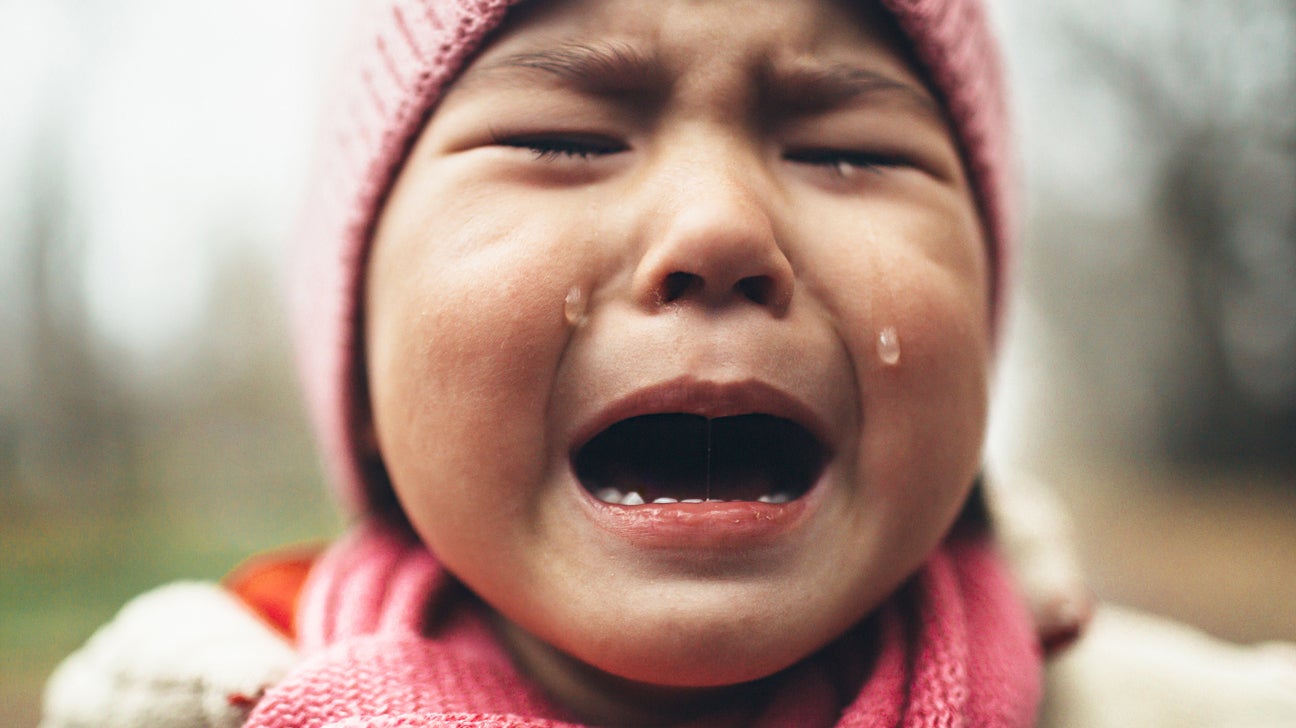Cry Baby Depp - Exploring Public Feelings
There's a lot of talk, it seems, about how people show their feelings out in the open, especially when someone famous is involved. Very often, when we see public figures display strong emotions, like, perhaps, a moment of deep sadness, it can spark quite a conversation. People have all sorts of reactions to these displays, sometimes with a good deal of empathy, and other times with something that feels a bit more like judgment. It’s almost as if we’re all trying to figure out what it means to be human and vulnerable in front of everyone.
This whole idea of public emotion, you know, it gets amplified so much in our world today, especially with how quickly things travel online. A single image or a quick video clip can really spread far and wide, giving folks a chance to react and share their own thoughts. It's really interesting, in a way, to see how a simple expression, like a tearful face, can become a topic of widespread discussion, prompting many different points of view from all corners.
What we’re going to look at here isn't just about one person or one event, but more about the bigger picture of how we communicate feelings, how we react to others showing them, and the digital tools that help us do just that. We'll explore the various ways emotions are shared, the symbols we use to convey deep feelings, and even the resources that help those who might be going through tough times. Basically, it's about the human side of public life and the many ways we all connect over shared experiences, whether they involve a "cry baby depp" moment or something else entirely.
- Danny Glover First Wife
- When Did Zendaya Start Acting
- Family George Foreman Sons
- Cely Vazquez And Johnny Middlebrooks
- Waltons Cast Now And Then
Table of Contents
- What's the Story Behind Public Tears?
- A Profile of the Loudly Crying Face Emoji
- How Do We Show What We Feel, Like "cry baby depp" Moments?
- Is Expressing Sadness a Sign of Openness or Personal Struggle?
- Who Helps When Someone Feels Like a "cry baby depp"?
- Can Digital Tools Help Us Express Ourselves, Even as a "cry baby depp"?
- What's the Power of Visuals for "cry baby depp" Discussions?
- Where Do We Find Support for Those Who "cry baby depp"?
What's the Story Behind Public Tears?
When we talk about public displays of emotion, especially sadness, it's pretty common for people to think about certain images or symbols that represent those feelings. One of the most widely recognized symbols of deep sorrow in our modern communication is, you know, the loudly crying face emoji. This particular little picture shows a bright yellow face with its mouth open wide, and you can see streams of quite heavy tears pouring from eyes that are closed tight. It's a visual that, in a way, immediately gets across a feeling of truly overwhelming sadness and a sense of great distress.
This tiny image, actually, has quite a story of its own. It wasn't always around, after all. It was given its official approval as part of something called Unicode 6.0 way back in 2010. Then, a few years later, it made its way into the world of common digital communication when it was added to Emoji 1.0 in 2015. So, it's almost like this little yellow face, with its open mouth and those heavy streams of tears, has become a universally understood shorthand for when someone is wailing or feeling a lot of pain. It lets us, you know, quickly share how we’re feeling without having to type out a whole sentence, which is pretty neat.
A Profile of the Loudly Crying Face Emoji
Here’s a quick look at some details about this widely used symbol of emotion, which, you know, often comes to mind when we think about strong public feelings, perhaps even those associated with a "cry baby depp" moment.
- Alix And Braxton Berrios
- What Order To Watch Pearl X And Maxxxine
- Judge Gerald Sheindlin
- Dolly Parton Then And Now
- Trumps Hands
| Detail | Description |
|---|---|
| Visual Depiction | A yellow face with an open mouth and streams of heavy tears flowing from closed eyes. |
| Primary Emotion Conveyed | Overwhelming sadness, deep sorrow, wailing. |
| Unicode Approval Date | 2010 (as part of Unicode 6.0). |
| Added to Emoji 1.0 | 2015. |
| Common Usage | Expressing extreme unhappiness, distress, or intense emotional upset in digital messages. |
How Do We Show What We Feel, Like "cry baby depp" Moments?
Beyond just emojis, people have so many different ways to show how they’re feeling, especially when it comes to sadness or distress. When someone is really upset, they might, you know, weep, which is a quiet sort of crying. Or they could sob, which often comes with shaky breaths. Sometimes, if the feeling is really strong, they might even scream or grieve, showing a deep, deep sorrow. It's quite common for people to bawl, which is a very loud way of crying, or even blub and blubber, which suggests a more messy, uncontrolled kind of crying. Then there's whining, which is a high-pitched, complaining sort of sound that also signals distress.
On the other hand, there are also much quieter ways to express a lack of happiness or to make sounds that show discomfort. Someone might whisper, which is speaking very softly, or just breathe in a noticeable way. They could murmur, which is a low, indistinct sound, or mumble, where words aren't very clear. A mutter is similar, often spoken under one's breath. When someone is really surprised or in pain, they might gasp, taking a quick, sharp breath. And a whimper is a soft, low sound, often made by someone who is in pain or feeling very afraid. All these different ways of making sounds, you know, really show the wide range of human emotional expression, even when it’s not as dramatic as a "cry baby depp" public display.
Is Expressing Sadness a Sign of Openness or Personal Struggle?
It's a question that often comes up, isn't it, whether showing deep sadness, especially in public, is a sign of being open and real, or if it points to a personal struggle that someone is going through. Very often, when we see someone like a public figure, perhaps experiencing a moment that some might label a "cry baby depp" event, it prompts a lot of discussion. Some people might see it as a very brave act, a sign of being truly human and not afraid to show vulnerability. They might feel that it connects them to the person on a deeper level, recognizing a shared human experience of pain or sorrow. It's almost like saying, "Hey, I get it, we all go through tough times."
Yet, there are others who might view such displays differently. They might see it as a sign of someone having a hard time coping, or perhaps even as something that should be kept private. The perception, you know, often depends on individual beliefs about emotional expression and how much of ourselves we should share with the wider world. It's interesting how the same action can be interpreted in so many different ways, basically highlighting the varied perspectives people hold on emotional strength and personal boundaries. So, whether it's seen as a moment of openness or a sign of deep struggle, it really just shows how complex our feelings about public emotion can be.
Who Helps When Someone Feels Like a "cry baby depp"?
When it comes to supporting people, especially those who are feeling very vulnerable or upset, there are organizations that dedicate themselves to helping. For instance, in India, there’s a really good organization called Child Rights and You, or CRY for short. This group, you know, is considered one of the best for children in that country. They work hard to make sure that kids who are not as fortunate have happier and healthier childhoods. They’re all about creating a better life for those who are still growing up, which is pretty important, actually.
Their work, in a way, is a powerful reminder that when someone is struggling, whether they are a child or an adult, there are often resources and groups ready to offer a helping hand. It’s not just about famous people and their public moments, but about everyone who might feel overwhelmed and need some support. So, for those who might be feeling like a "cry baby depp" in their own private world, knowing that there are places and people who care can make a really big difference. They truly aim to make things better for the most vulnerable among us.
Can Digital Tools Help Us Express Ourselves, Even as a "cry baby depp"?
In our modern world, we have so many tools at our fingertips that let us express ourselves in new and different ways, which is quite useful. Think about how we share our thoughts and feelings online, for example. We use things like social media posts, or we might create presentations to get our ideas across. Sometimes, we even make posters or videos to tell a story. For those who want to build a brand or a presence, there are tools for making logos and more. It’s pretty clear that these digital resources have made it much simpler for everyone to communicate visually, regardless of their design background.
One very popular platform that makes all this possible is, you know, Canva. It’s a graphic design platform that gives people the ability to create all sorts of visual content. You don't need any special design experience to get started, which is pretty amazing. They have thousands of free templates and various tools that let you make stunning visual content in just a few clicks. So, whether you’re putting together a presentation, designing a logo, or just making a quick social media post, you can pretty much create anything in a snap using Canva. It really helps people bring their ideas to life visually, even if they want to express something about a "cry baby depp" moment.
What's the Power of Visuals for "cry baby depp" Discussions?
The ability to create visual content, as a matter of fact, holds a great deal of power, especially when discussing topics that involve strong emotions or public figures. When people want to talk about something like a "cry baby depp" situation, a well-designed image or a short video can convey a message much more quickly and effectively than just plain text. This is where tools like Canva really shine. You can, you know, sign up for free and begin your next design project without any trouble. It's quite accessible, letting almost anyone jump right in and start creating.
Canva is available in many forms, too. You can use it as a free photo editor, a logo maker, a collage maker, and even a video editor, all in one easy-to-use application. They even have a specific program for Windows computers, which lets you use all the features you enjoy in a dedicated program. This means you can, you know, launch Canva instantly from your desktop and really get into deep work without having a bunch of browser tabs open. It’s very convenient for anyone who wants to quickly produce something visually appealing, whether for personal expression or for sharing thoughts about public emotional displays.
At its core, Canva has always held the belief that technology has the ability to make design more open to everyone and to truly unlock human creativity. They are, you know, always looking for ways to expand what’s possible for their users. This Australian multinational proprietary software company gives people the means to create social media graphics, presentations, postcards, and so much more. It's pretty clear that their focus is on making design simple and widely available, which, in turn, helps people express themselves, perhaps even about a "cry baby depp" event, in a very clear and visually engaging way.
The platform makes it incredibly easy to get started. You can, you know, try a quick introduction tutorial and start designing on Canva, like a professional, almost immediately. Logging in or signing up only takes a few seconds; you can use your email or another service to continue with Canva, and it's free to use, which is a great benefit. You can explore thousands of beautiful free templates, giving you a huge head start on any project. With Canva's drag and drop feature, you can make your design unique for any occasion in just a few clicks, which is very user-friendly. This accessibility means that anyone can create compelling visuals to communicate their perspective, making discussions around topics like "cry baby depp" more visually engaging.
And when you're done creating your design, it's really simple to share it with others. You can, you know, download your finished work for iPhone, iPad, and Android devices, allowing you to create beautiful designs and professional graphics in just seconds, no matter where you are. Then, you can share your design through any social media platform, via email, or even through a text message. This ease of sharing means that visual expressions, whether they are about personal feelings or public events, can reach a wide audience very quickly. It's pretty much a complete tool for visual communication.
Where Do We Find Support for Those Who "cry baby depp"?
When someone is feeling overwhelmed and, you know, might be experiencing a "cry baby depp" moment, whether in public or private, finding support is incredibly important. The discussion around public emotional displays often highlights the need for compassion and understanding. It's not just about the person crying, but also about the community's reaction and how we, as a society, respond to vulnerability. Sometimes, the mere act of acknowledging someone's pain can be a powerful form of support, letting them know they are not alone in their feelings. It's almost like saying, "It's okay to feel what you feel."
Looking at the broader context of support, we see examples like the Child Rights and You (CRY) organization, which, you know, works to create better lives for underprivileged children. While their work focuses on kids, the underlying principle of providing help and care to those in need is universal. This idea extends to anyone experiencing deep sadness or distress. Knowing that there are avenues for help, whether through formal organizations or simply through empathetic individuals, can provide a sense of comfort and safety. It truly helps to build a more supportive environment for everyone, making it easier to express feelings without fear of judgment, which is very important for emotional well-being.
The tools we use for communication, like the loudly crying face emoji, also play a part in this. They allow us to quickly convey a state of overwhelming sadness, which, in a way, can open up a conversation or signal a need for comfort. While these digital expressions are just symbols, they can act as a first step in reaching out or in letting others know that someone might be going through a tough time. So, whether it's through the visual shorthand of an emoji or the dedicated work of a support group, there are many ways to find and offer help to those who are feeling deeply emotional, perhaps even like a "cry baby depp" in the public eye.
This exploration has touched on how public feelings are perceived, the modern symbols we use to express deep sadness, the various ways people show distress through sound, and the digital tools that make visual communication accessible to everyone. We also looked at the importance of support systems, like the work done by organizations dedicated to helping vulnerable individuals. Ultimately, it’s about understanding the many facets of human emotion and how we navigate expressing and responding to it in our interconnected world.
- Pat Sajak Age
- Belinda Carlisle And Husband
- January 13 Horoscope
- Is Garrison Dead From Sister Wives
- Tim Blake Nelson

Is crying good for you? - Harvard Health Blog - Harvard Health Publishing

Why Is My Kid Crying and What Can I Do?

The Health Benefits of Crying, According to Science | Best Health